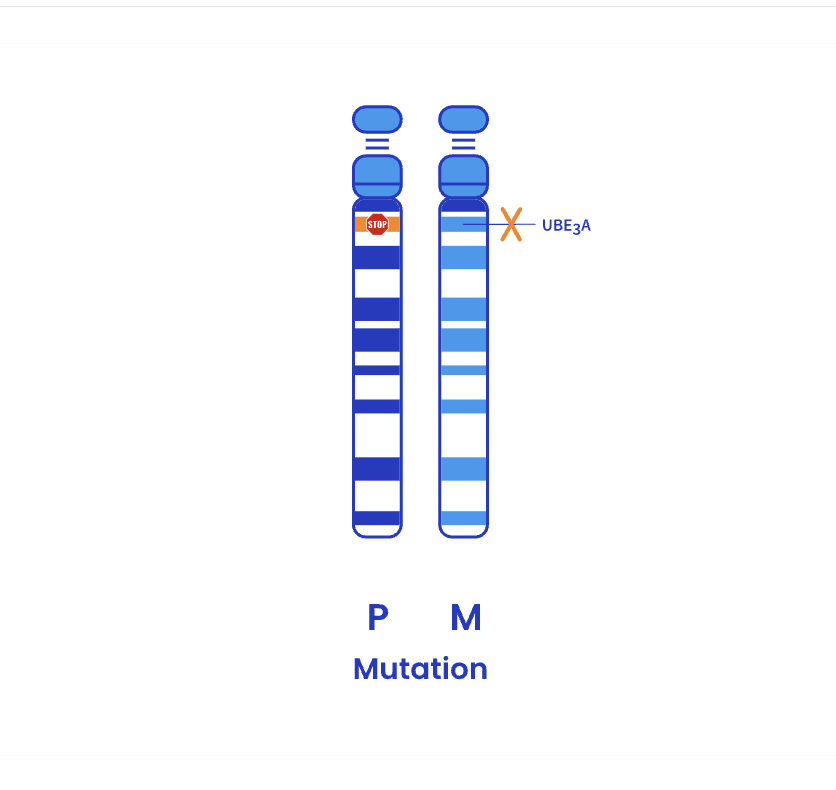About Angelman Syndrome
AS Genotypes: Mutation
Some individuals live with AS because they have a difference within the UBE3A gene. Each gene is made up of chemicals called nucleotides that form the DNA. The DNA nucleotides, called A, C, T, and G, are arranged in a very specific order that the cell reads to make the UBE3A protein. A difference in the DNA nucleotides is called a variant, also referred to as a mutation.
There are different types of variants in UBE3A. A missense variant is a change in the nucleotides that results in one piece of the protein, called an amino acid, being switched for a different amino acid. In some cases, a missense variant still allows for some UBE3A protein to be made, although depending on the location of the variant, the protein may not be functional. If the UBE3A protein has some remaining function, the person living with AS may have fewer symptoms or less severe symptoms.
In these individuals, a mutation in the UBE3A gene prevents its expression or function.

A nonsense variant is a different kind of change in the nucleotides. With a nonsense variant, a STOP signal is inserted in the gene. As a result, when the cells are reading the gene, they stop at that location in the gene and the remainder of the gene after the stop signal cannot be read. The UBE3A protein that is made is typically small, nonfunctional and quickly broken down by the body.
UBE3A variants can be brand new in the egg that made the person, or they can be inherited from the mother who also carries the variant. Consequently, testing the mother for the variant is important. If the mother does not have the variant, the chance for a future child to have the UBE3A variant that causes AS is less than 1%. This means that at least 99% of the time, future children will not have the UBE3A variant that causes AS. The chance is not zero because there have been rare cases reported where the woman had multiple eggs with the variant or actually carried the variant in some of her body cells.
If the mother has the UBE3A variant, each child has a 50% chance to inherit the UBE3A variant and therefore have AS, and each child has a 50% chance to inherit the mother’s other UBE3A gene (which is functional) and not have AS. If the mother has the variant, her siblings and other relatives may also have the variant. They may consider genetic testing to understand the chances for their children.
All the pharmaceutical companies in our space have stated that they want to have the most consistent group for the earliest phases of clinical trials (Phase 1/2), and in many cases they want the most severely affected to start with. That is generally considered deletions, but certain trials are also enrolling mutations.
Two of the current clinical trials are enrolling patients with AS mutations. Visit this page to learn more about them.
Connect with other AS Mutation families by writing to us here: community@cureangelman.org.
Still have questions?
If you are wondering about your specific chance to have a child with a genetic variant that causes AS, it is very important to consult a genetics professional like a genetic counselor or geneticist. The chance varies depending upon the test results of the person living with AS and the testing that was performed on the parent(s). The information provided here may be helpful but it is not specific to your family and is not meant to replace genetic counseling.